The Property of a Gentleman 紳士藏品 A rare silk court 'silver pheasants' rank badge, buzi 17th century The badge finely embroidered with a pair of silver pheasants, each bird rendered with outstretched wings soaring amidst large clusters of lozenge-shaped clouds, above rolling waves and prism-like rocks, all worked in vibrant shades of green, orange, blue, yellow and white couched silk floss and couched gold threads on a twisted blue silk thread ground. 37.3cm (14 1/2in) long x 36.3cm (14 2/8in) wide. Fußnoten 十七世紀 白鷴紋刺繡補子 Provenance: Palazzo Corsini, Florence The Plum Blossom Gallery, Hong Kong, November 1994 A European private collection 來源:意大利佛羅倫薩,Palazzo Corsini 香港古董商,萬玉堂,1994年11月 歐洲私人收藏 During the 17th century, under pressure from the Manchu to institute their own style of court attire, the shape of the buzi or insignia badges, became more exactingly square. The nine-grade system which assigned pictorial badges to all in attendance at the at the imperial court was codified in 1391. Under the Ming and Qing dynasties, badges with different categories of beasts were assigned to distinguish the aristocracy from the gentry and differenciate status within the elaborate military and civil bureaucracies. The present badge was part of a large group comprising over thirty similar silk badges, mainly representing lions and silver pheasants, once sewn into a large curtain or canopy from the collection of the Palazzo Corsini, Florence. It has been suggested that these badges were likely assembled in Tibet to form a large hanging or a canopy. For published examples of similar Ming badges from the Corsini group see C.Hall, et al., One Thousand Years of Chinese Textiles, Hong Kong, 1995, pp.66-68; see also J.Vollmer, Silks For Thrones and Altars: Chinese Costumes and Textiles from the Liao Through the Qing Dynasty, Paris, 2003, no.12, pp.36-37; see C.Hall, Power Dressing: Textiles for Rulers and Priests from the Chris Hall Collection, Singapore, 2006, p.240, no.69. A related silk 'lion' badge, Ming dynasty, from the Corsini collection, was sold at Christie's New York, 19 March 2008, lot 19.
The Property of a Gentleman 紳士藏品 A rare silk court 'silver pheasants' rank badge, buzi 17th century The badge finely embroidered with a pair of silver pheasants, each bird rendered with outstretched wings soaring amidst large clusters of lozenge-shaped clouds, above rolling waves and prism-like rocks, all worked in vibrant shades of green, orange, blue, yellow and white couched silk floss and couched gold threads on a twisted blue silk thread ground. 37.3cm (14 1/2in) long x 36.3cm (14 2/8in) wide. Fußnoten 十七世紀 白鷴紋刺繡補子 Provenance: Palazzo Corsini, Florence The Plum Blossom Gallery, Hong Kong, November 1994 A European private collection 來源:意大利佛羅倫薩,Palazzo Corsini 香港古董商,萬玉堂,1994年11月 歐洲私人收藏 During the 17th century, under pressure from the Manchu to institute their own style of court attire, the shape of the buzi or insignia badges, became more exactingly square. The nine-grade system which assigned pictorial badges to all in attendance at the at the imperial court was codified in 1391. Under the Ming and Qing dynasties, badges with different categories of beasts were assigned to distinguish the aristocracy from the gentry and differenciate status within the elaborate military and civil bureaucracies. The present badge was part of a large group comprising over thirty similar silk badges, mainly representing lions and silver pheasants, once sewn into a large curtain or canopy from the collection of the Palazzo Corsini, Florence. It has been suggested that these badges were likely assembled in Tibet to form a large hanging or a canopy. For published examples of similar Ming badges from the Corsini group see C.Hall, et al., One Thousand Years of Chinese Textiles, Hong Kong, 1995, pp.66-68; see also J.Vollmer, Silks For Thrones and Altars: Chinese Costumes and Textiles from the Liao Through the Qing Dynasty, Paris, 2003, no.12, pp.36-37; see C.Hall, Power Dressing: Textiles for Rulers and Priests from the Chris Hall Collection, Singapore, 2006, p.240, no.69. A related silk 'lion' badge, Ming dynasty, from the Corsini collection, was sold at Christie's New York, 19 March 2008, lot 19.
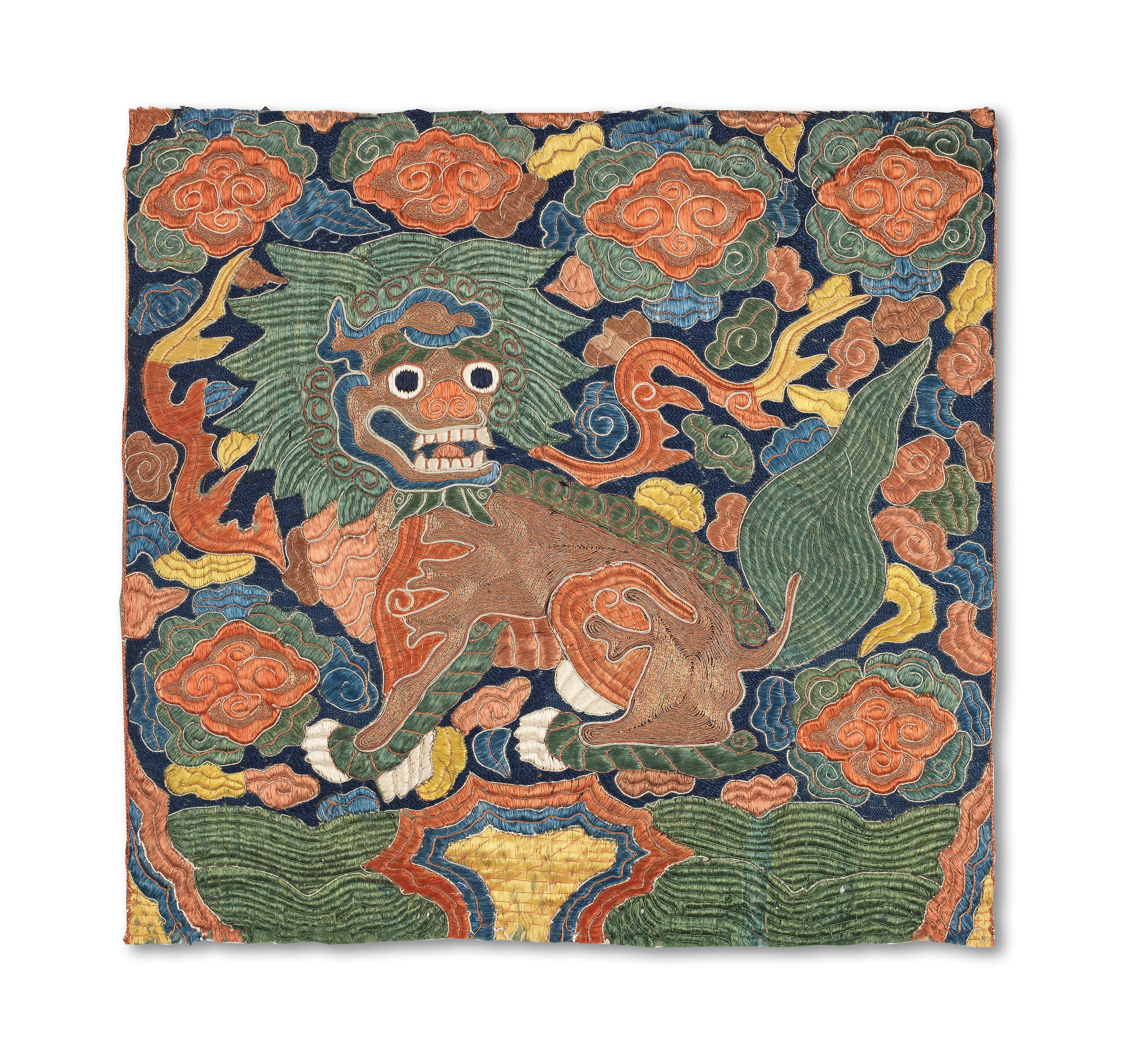
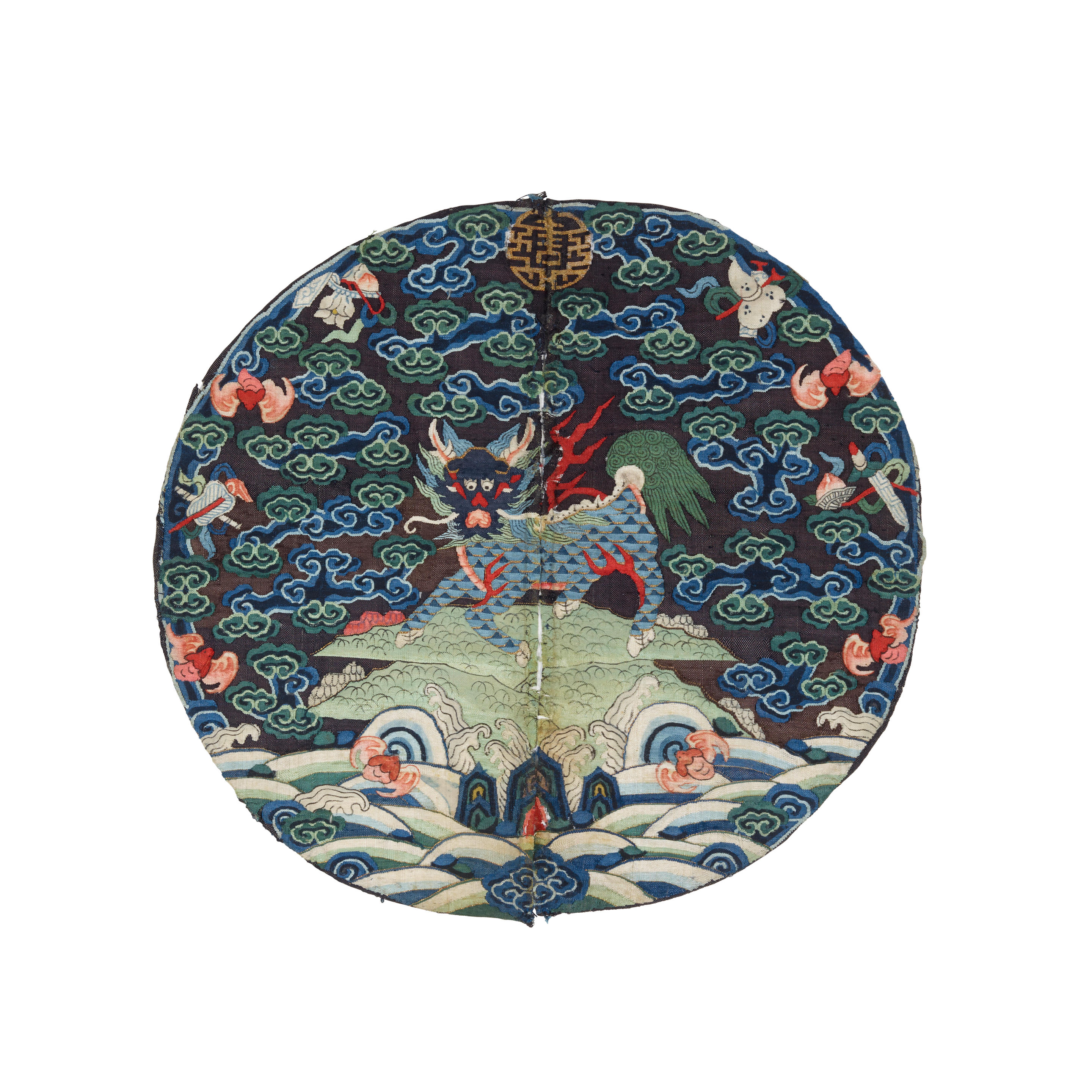

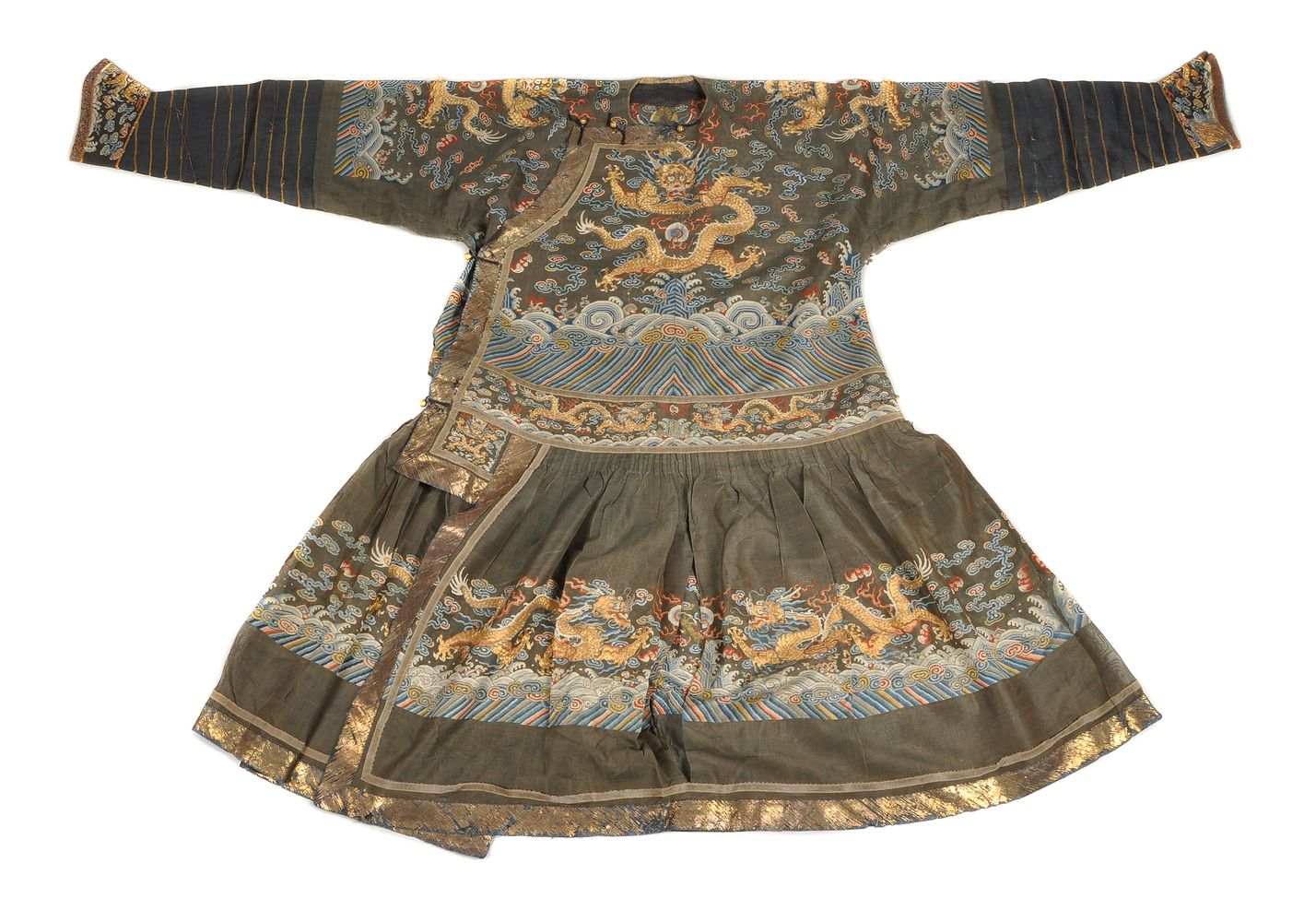
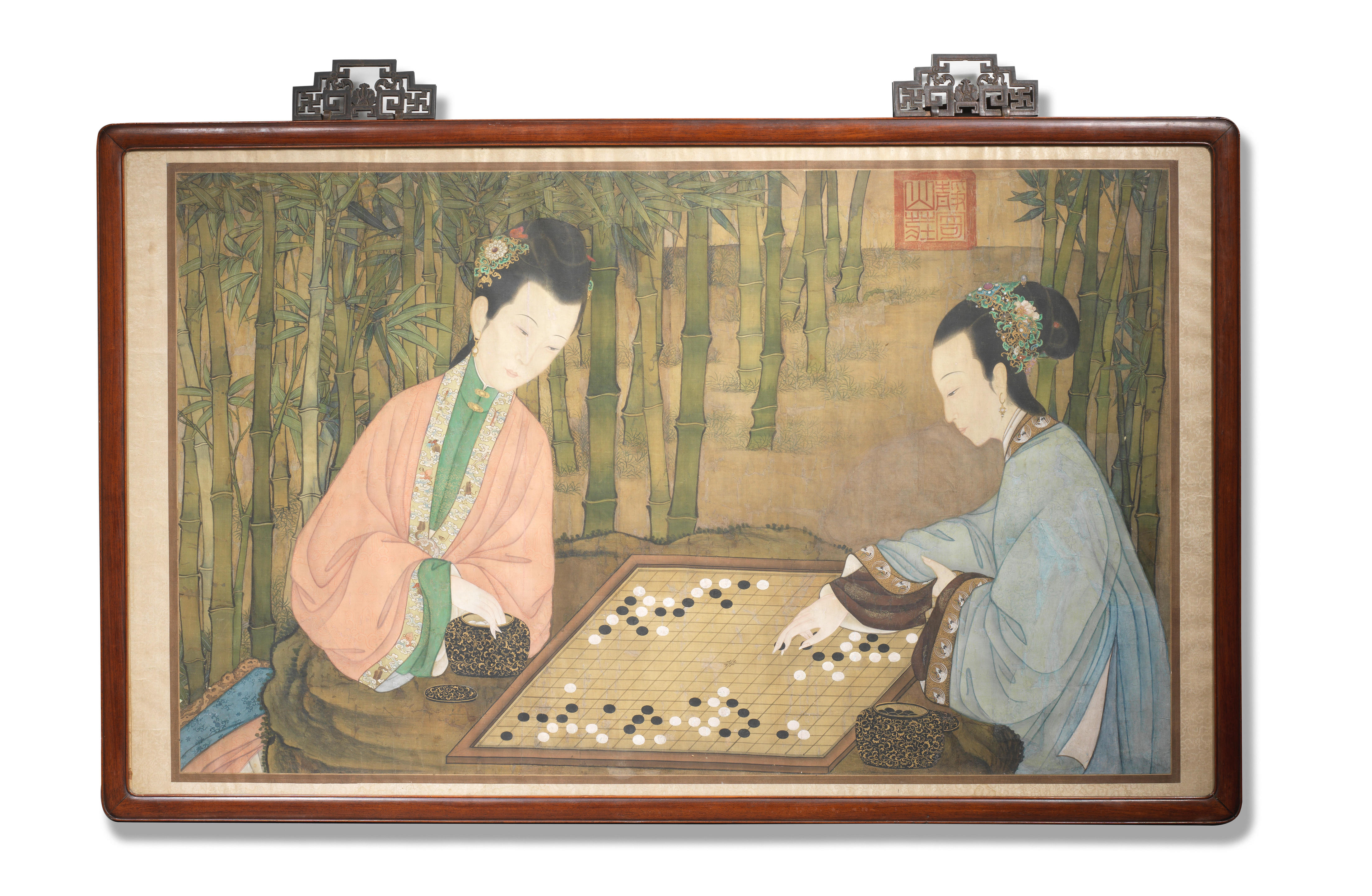
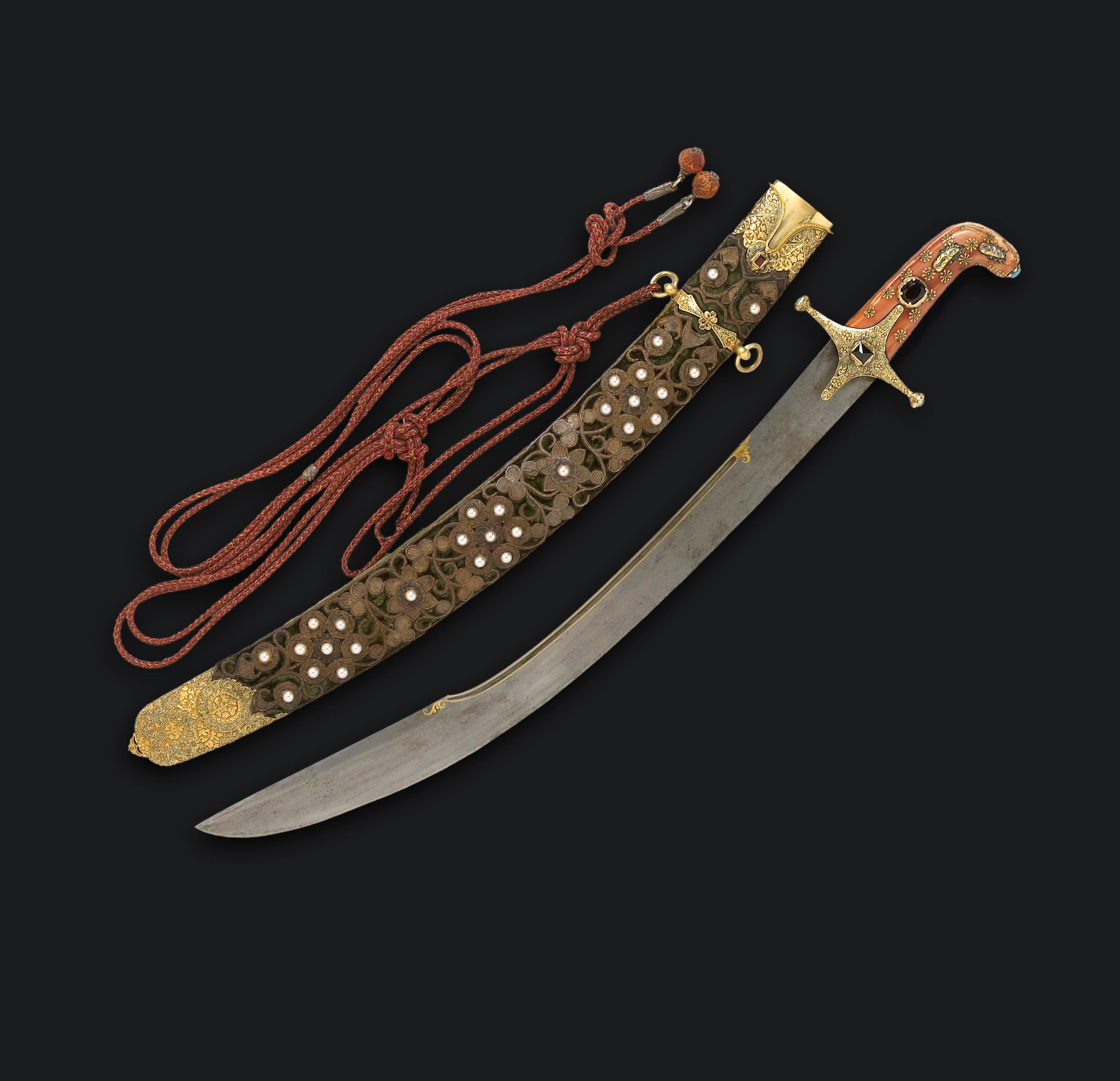
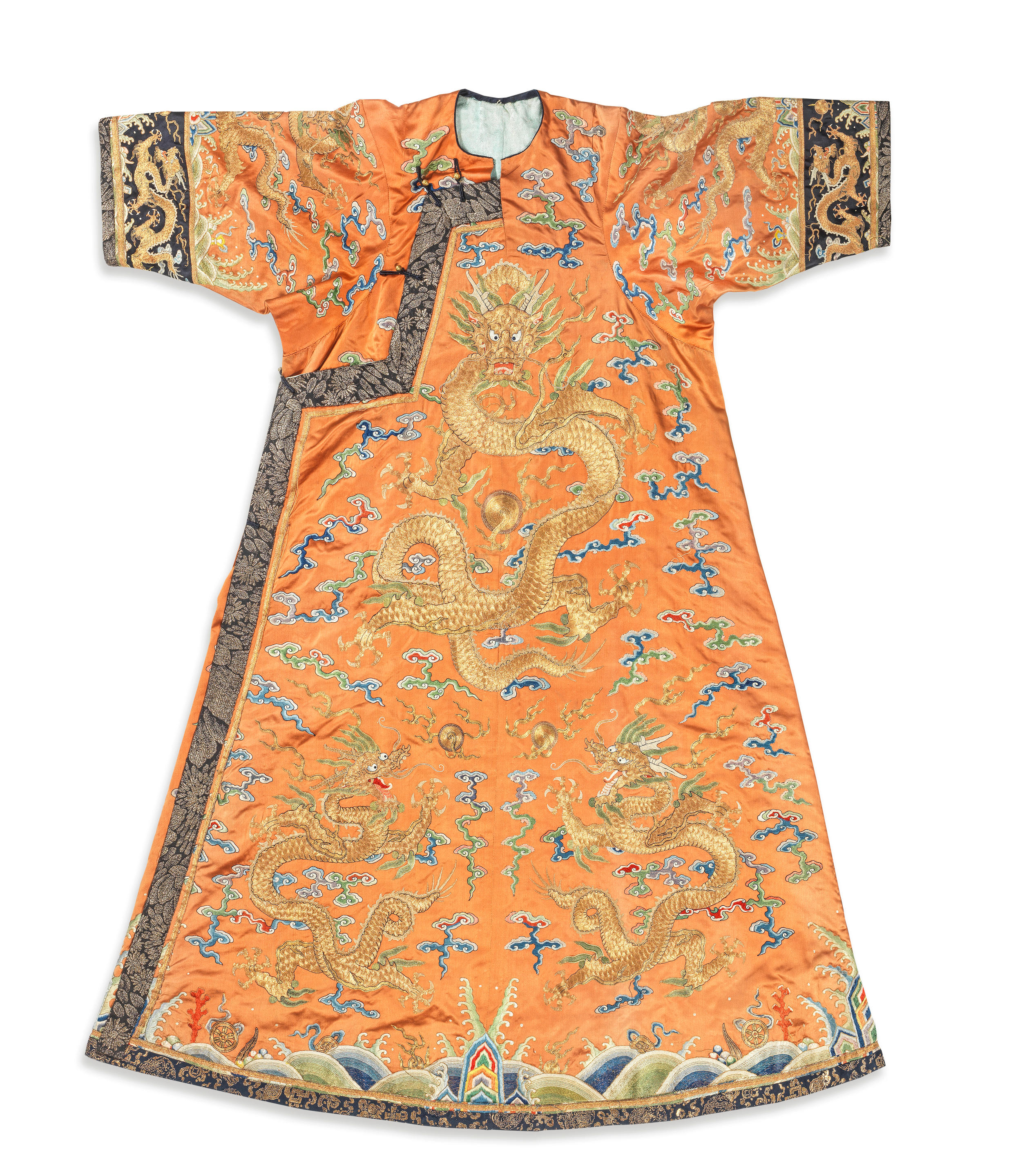
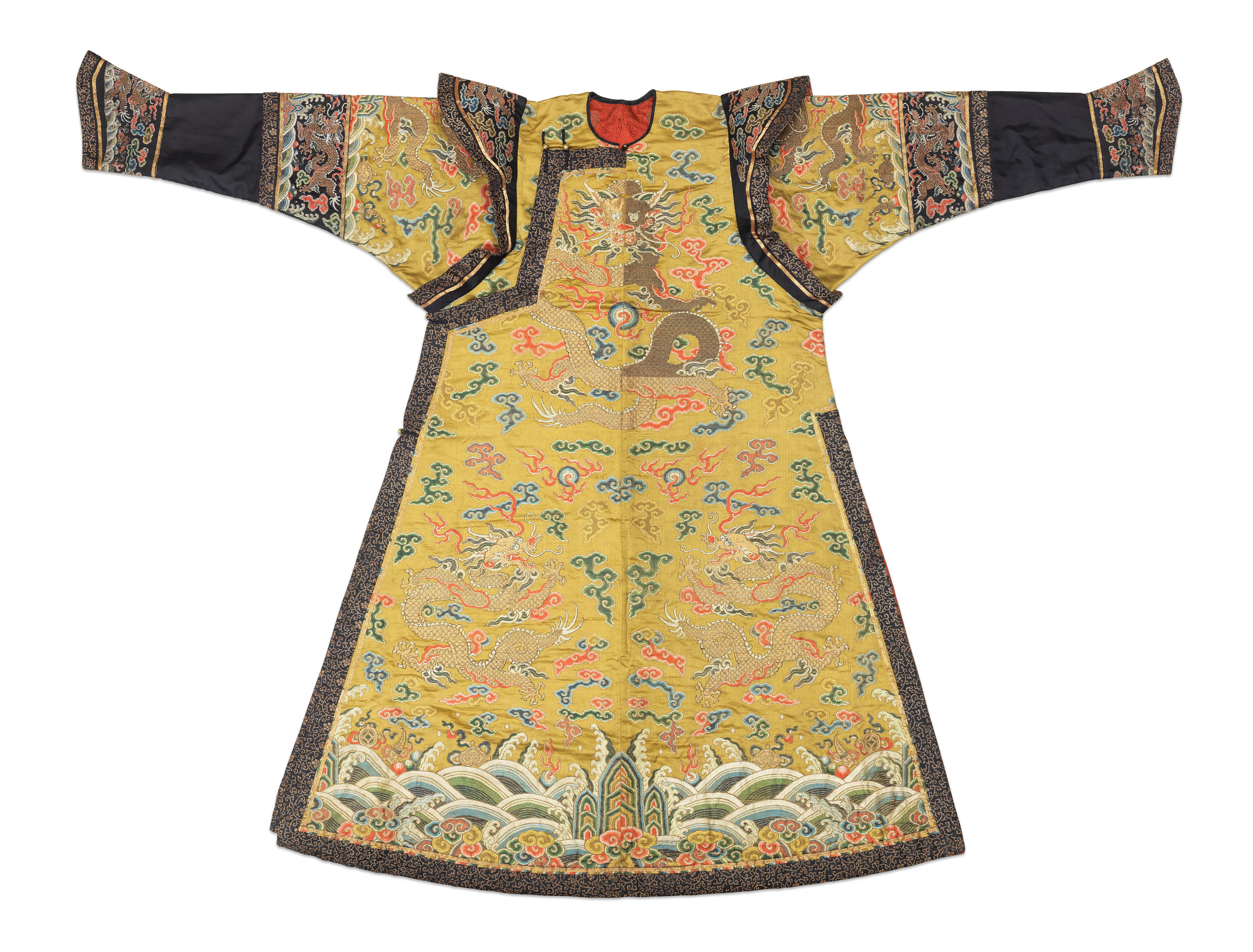
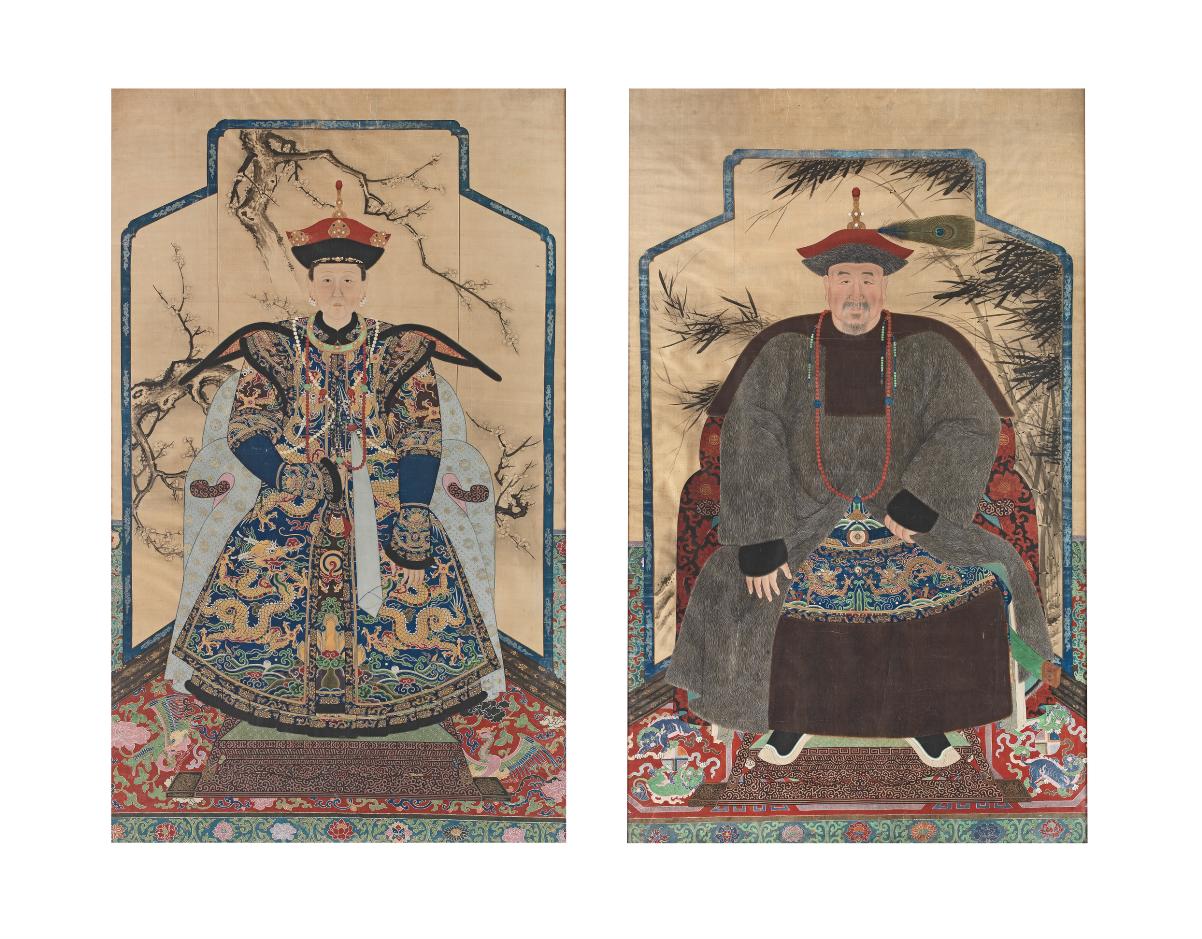
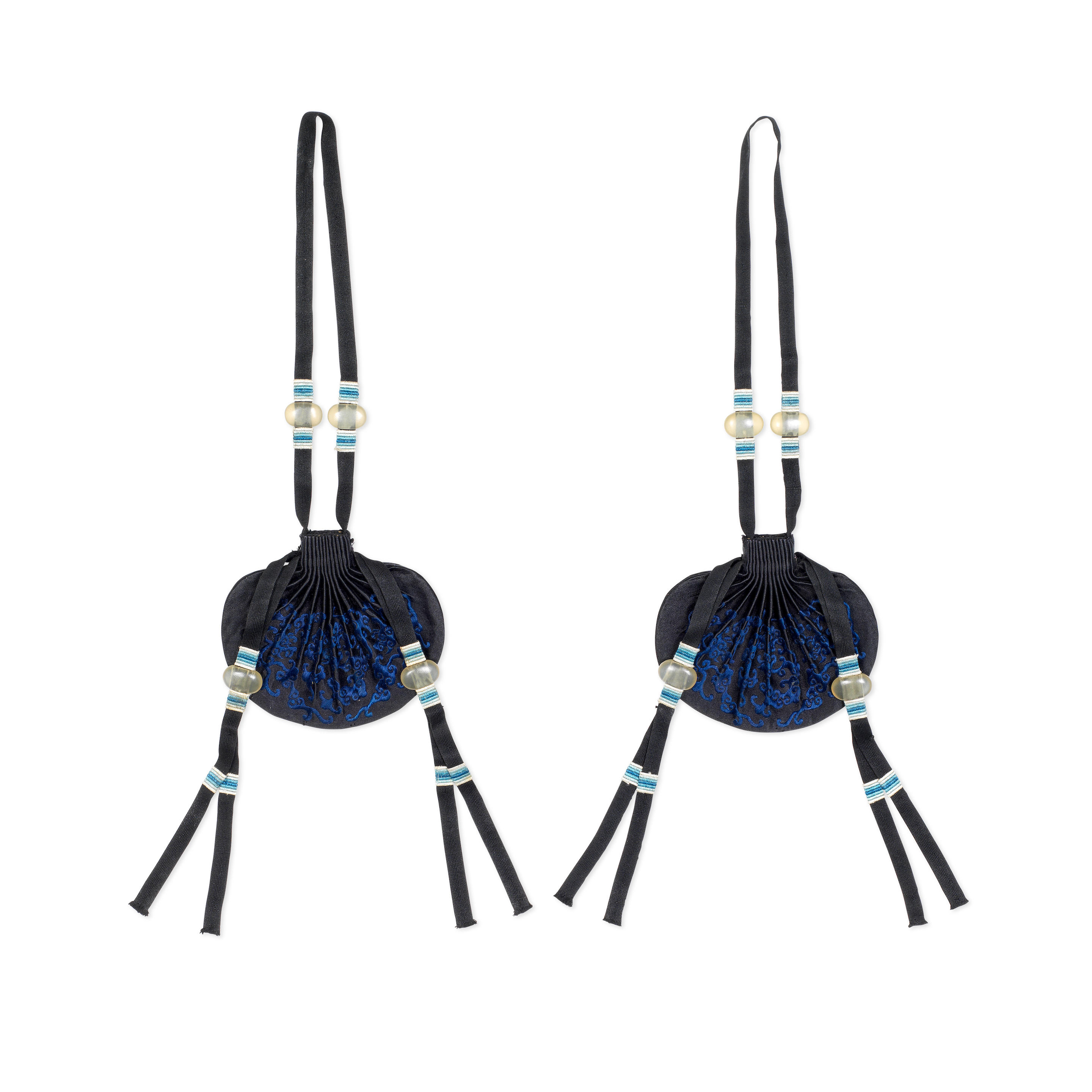

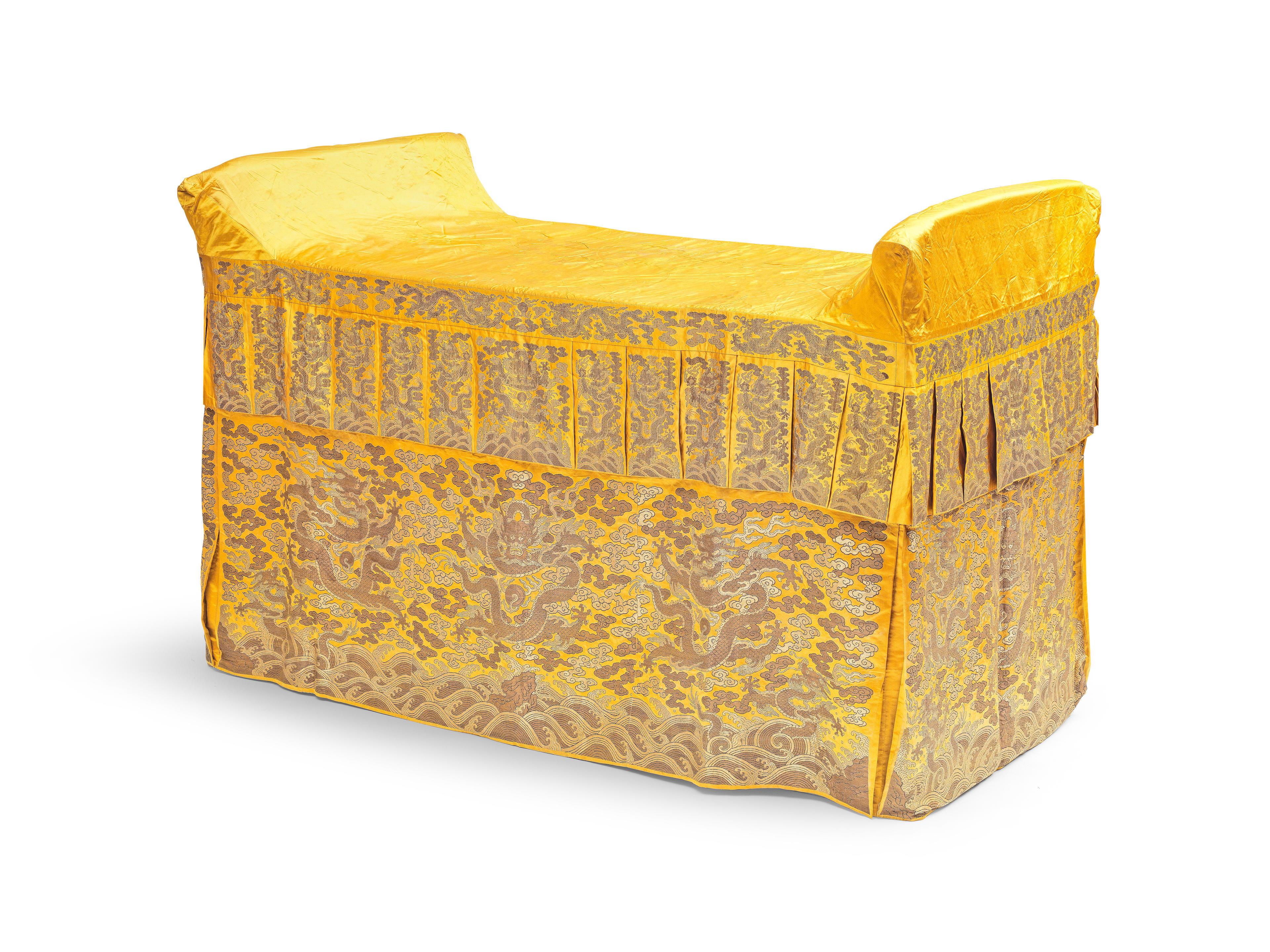


Testen Sie LotSearch und seine Premium-Features 7 Tage - ohne Kosten!
Lassen Sie sich automatisch über neue Objekte in kommenden Auktionen benachrichtigen.
Suchauftrag anlegen